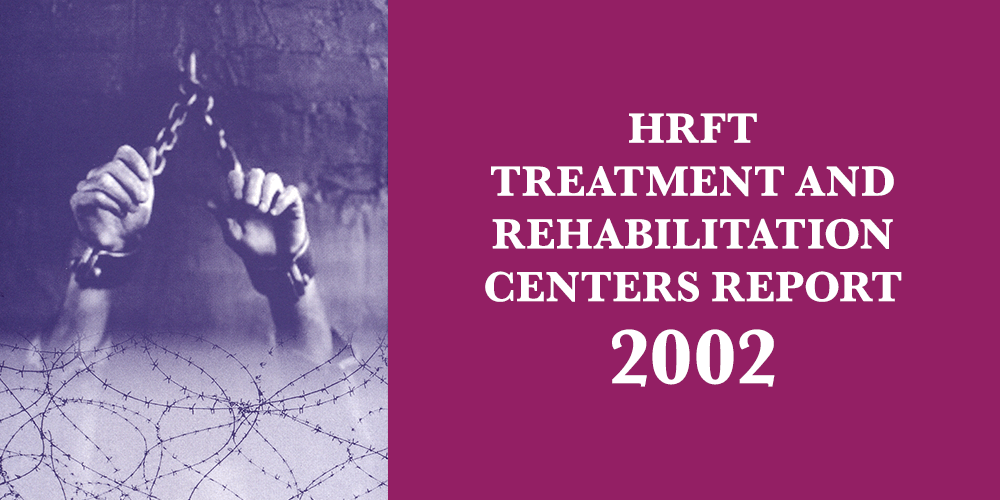PREFACE
Human Rights Foundation of Turkey started to operate after its legal tender came into force in 1990. From that time on, one of its fields of operation has been the treatment and rehabilitation of torture survivors. Having started to its works in a single flat under highly narrow circumstances, the HRFT today carries out its activities through five Treatment and Rehabilitation Centers at five different cities as well as a Documentation Center and a Headquarters.
Having taken its first steps in 1990, the HRFT has provided treatment and rehabilitation services for overall 7910 persons till the end of 2002. Besides, it now works as a reference center, and it has been awarded many times both at the national and international sphere. Under these circumstances, the HRFT experiences both the felicity of this success and the discontentment of living in a country where torture is still systematically applied.
As being one of the most significant problems in the field of human rights, the torture issue has maintained its place of importance in 2002 as well. Unfortunately, torture is systematically applied in Turkey despite all promises made.
Beginning after the F-Type Prisons have come to the agenda, hunger strikes and death fasts are still going on. Many activists, who are either still on action or released or who abort the action, have been dealing with serious disorders or sequels. In 2002, the HRFT Treatment and Rehabilitation Centers have continued to provide treatment and rehabilitation services for the persons experiencing health problems in this period.
Following the Preface and Introduction, 2002 Report of the HRFT Treatment and Rehabilitation Centers is composed of two divisions. The first division evaluates the data of 879 torture survivors who applied to our centers. At the end of the first division, the data of the applicants who had hunger strike and death fast related health complaints are evaluated.
The second division covers the article of Prof. Dr. Sebnem Korur Financi, “Istanbul Protocol and Preventing Torture”, which evaluates the role of Istanbul Protocol in the struggle to prevent torture; in addition to the article of Dr. Yesim Islegen, “Gynecologic Approach Considering Violence against Women”, which brings an approach for determining torture and for the treatment and rehabilitation of torture survivors.
We feel it necessary to apologize for our readers because of the 6-month delay in releasing the 2002 Report of the HRFT Treatment and Rehabilitation Centers. We also would like to express that we feel a duty to cover this gap in 2003.
In addition to its founders, executive board, staff, volunteers, and the persons and organizations that it works with, the HRFT acts in concert with all showing solidarity, especially with the Headquarters and Branches of the Human Rights Association, Turkish Medical Association and Medical Chambers. We would like to thank all friends for their sincere solidarity.

